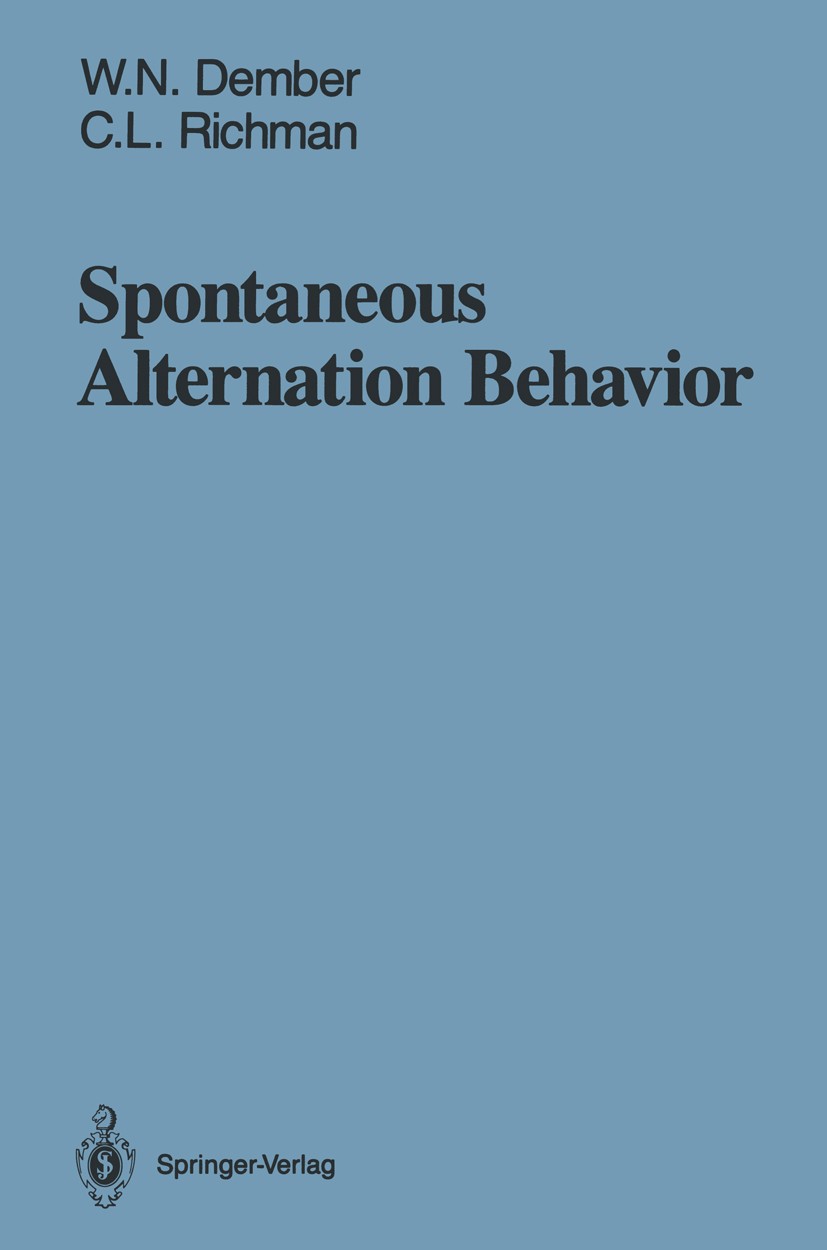| 书目名称 | Spontaneous Alternation Behavior | | 编辑 | William N. Dember,Charles L. Richman | | 视频video | http://file.papertrans.cn/875/874580/874580.mp4 | | 图书封面 |  | | 描述 | A wide variety of species, including human beings, exhibits a remarkably reliable behavior pattern, known as spontaneous alternation behavior (SAB), that has intrigued researchers for over seven decades. Though the details may vary depending on species and setting, SAB essentially entails first choosing one member of a pair of alternatives and then the other, without instructions or incen tives to do so. Spontaneous alternation is manifested even in the early trials of a discrimination-learning experiment, where only one of the choices is reinforced. Indeed, that was the setting in which SAB was first noted (Hunter, 1914). Rein forcement contingencies, evidently, are superimposed, not on a random sequence of choices, but on a potent, systematic behavior pattern. This book is the first to be devoted entirely to SAB and closely related phenomena, such as habituation and exploration. The literature on SAB is vast, covering a host of questions ranging from the cues that guide alternation to its phylogenetic and ontogenetic generality, its relation to learning and motivation, and its neurochemical substrates. In separate chapters we take up each of the major issues, reviewing what is | | 出版日期 | Book 1989 | | 关键词 | brain; emotion; learning; memory; motivation; perception; phylogeny | | 版次 | 1 | | doi | https://doi.org/10.1007/978-1-4613-8879-1 | | isbn_softcover | 978-1-4613-8881-4 | | isbn_ebook | 978-1-4613-8879-1 | | copyright | Springer-Verlag New York Inc. 1989 |
The information of publication is updating

|
|
 |Archiver|手机版|小黑屋|
派博传思国际
( 京公网安备110108008328)
GMT+8, 2025-12-17 23:23
|Archiver|手机版|小黑屋|
派博传思国际
( 京公网安备110108008328)
GMT+8, 2025-12-17 23:23


